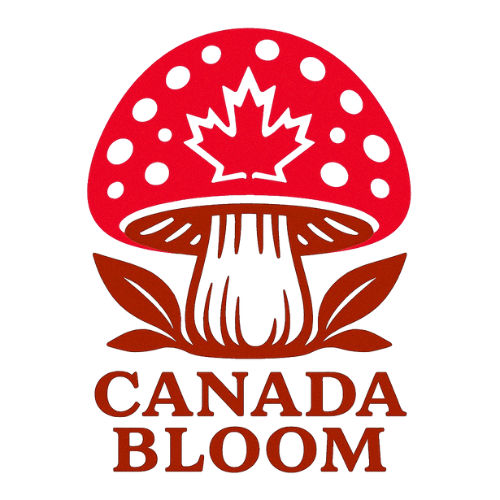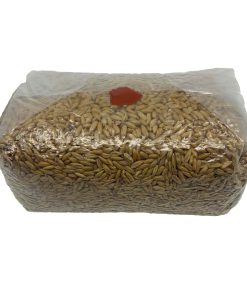Sterile Substrates
Sterile substrates play an essential role in the cultivation of mushrooms and other fungi. They provide a clean, nutrient-rich base for spores or mycelium to grow without the risk of contamination. In mushroom cultivation, having a properly sterilized substrate is one of the most important steps to ensure healthy growth, high yields, and safe products. Growers around the world, including hobbyists and commercial cultivators, rely on sterile substrates as the foundation for successful cultivation.
What Are Sterile Substrates?
A substrate is the material in which mushrooms grow. Common materials include grains, compost, sawdust, coco coir, and manure. However, these raw materials naturally contain bacteria, molds, and other microorganisms. If left untreated, these organisms can outcompete the mushroom mycelium and ruin the crop. Sterile substrates are substrates that have been treated, usually through heat or pressure, to kill unwanted organisms and provide a clean environment for mushroom growth.
Why Sterility Matters in Mushroom Cultivation
The success of mushroom cultivation depends heavily on preventing contamination. Bacteria, molds, and other fungi are naturally present in soil, plant matter, and organic waste. These competitors can quickly colonize unsterilized substrates, leaving no room for mushroom mycelium to grow. Sterility ensures that the mushroom spores or mycelium have the best chance to colonize the substrate without interference.
Even small amounts of contamination can lead to failed growth, reduced yields, or unsafe mushrooms. That is why sterile substrates are considered the foundation of reliable and consistent mushroom cultivation.
Common Types of Substrates That Require Sterilization
Different types of mushrooms grow best in different substrates. Some of the most common ones include:
– Grain Substrates: Rye, wheat, millet, or brown rice are commonly sterilized for mushroom spawn production.
– Sawdust Substrates: Hardwood sawdust mixed with bran is often used for gourmet mushrooms like shiitake or lion’s mane.
– Coco Coir and Vermiculite: Popular for beginners because they are easier to handle, though pasteurization may be enough in some cases.
– Manure-Based Substrates: Often used for species like button mushrooms and require careful sterilization or pasteurization.
– Compost Mixes: Rich in nutrients but prone to contamination if not sterilized properly.
How Substrates Are Sterilized
There are several methods to sterilize substrates, depending on the scale and type of cultivation:
– Pressure Cooking: A common method for small-scale growers. Substrates are placed in jars or bags and sterilized using a pressure cooker at high heat and pressure, typically 15 PSI for 90–120 minutes.
– Autoclaving: Used in laboratories and commercial settings, this method sterilizes substrates with pressurized steam at precise temperatures and times.
– Pasteurization: In some cases, heat treatment at lower temperatures (60–80°C) is used to reduce harmful organisms while keeping beneficial microbes alive. This is common for bulk substrates like straw.
– Chemical Sterilization: Less common, but some growers use chemicals like hydrogen peroxide to treat small amounts of substrate.
Benefits of Using Sterile Substrates
Using sterile substrates provides several key benefits for mushroom cultivators:
– Higher Success Rate: Clean substrates reduce the risk of contamination and failed harvests.
– Faster Colonization: Without competition, mushroom mycelium spreads quickly through the substrate.
– Better Yields: Sterile conditions support healthier growth and larger flushes of mushrooms.
– Improved Safety: Prevents harmful molds or bacteria from growing alongside edible mushrooms.
– Consistency: Sterility ensures predictable results across multiple cultivation attempts.
Challenges of Maintaining Sterility
While sterile substrates are effective, maintaining sterility can be challenging. Even after sterilization, handling substrates in open air can introduce contaminants. That is why cultivators often work in clean environments, such as still-air boxes or laminar flow hoods, when inoculating their sterile substrates. Proper sealing of jars and bags also prevents contaminants from entering during colonization.
Sterile Substrates in Canada and Beyond
In Canada, mushroom cultivation has grown in popularity, both for gourmet and medicinal purposes. Many suppliers now provide pre-sterilized substrates to hobbyists and growers, making cultivation more accessible. These ready-to-use products save time and reduce the risks associated with improper sterilization at home. Whether for oyster mushrooms, lion’s mane, or more experimental species, sterile substrates are a reliable choice for Canadian growers looking for convenience and consistent results.
Conclusion
Sterile substrates are a cornerstone of successful mushroom cultivation. They provide a clean, nutrient-rich base that allows mushroom mycelium to thrive without competition from harmful bacteria or molds. From grains and sawdust to coco coir and manure, almost any substrate can be sterilized to improve its suitability for mushroom growth. While sterilization requires time, equipment, and careful handling, the benefits far outweigh the challenges. Whether growing mushrooms at home or on a commercial scale, sterile substrates remain an essential tool for ensuring healthy crops, higher yields, and safe consumption.

